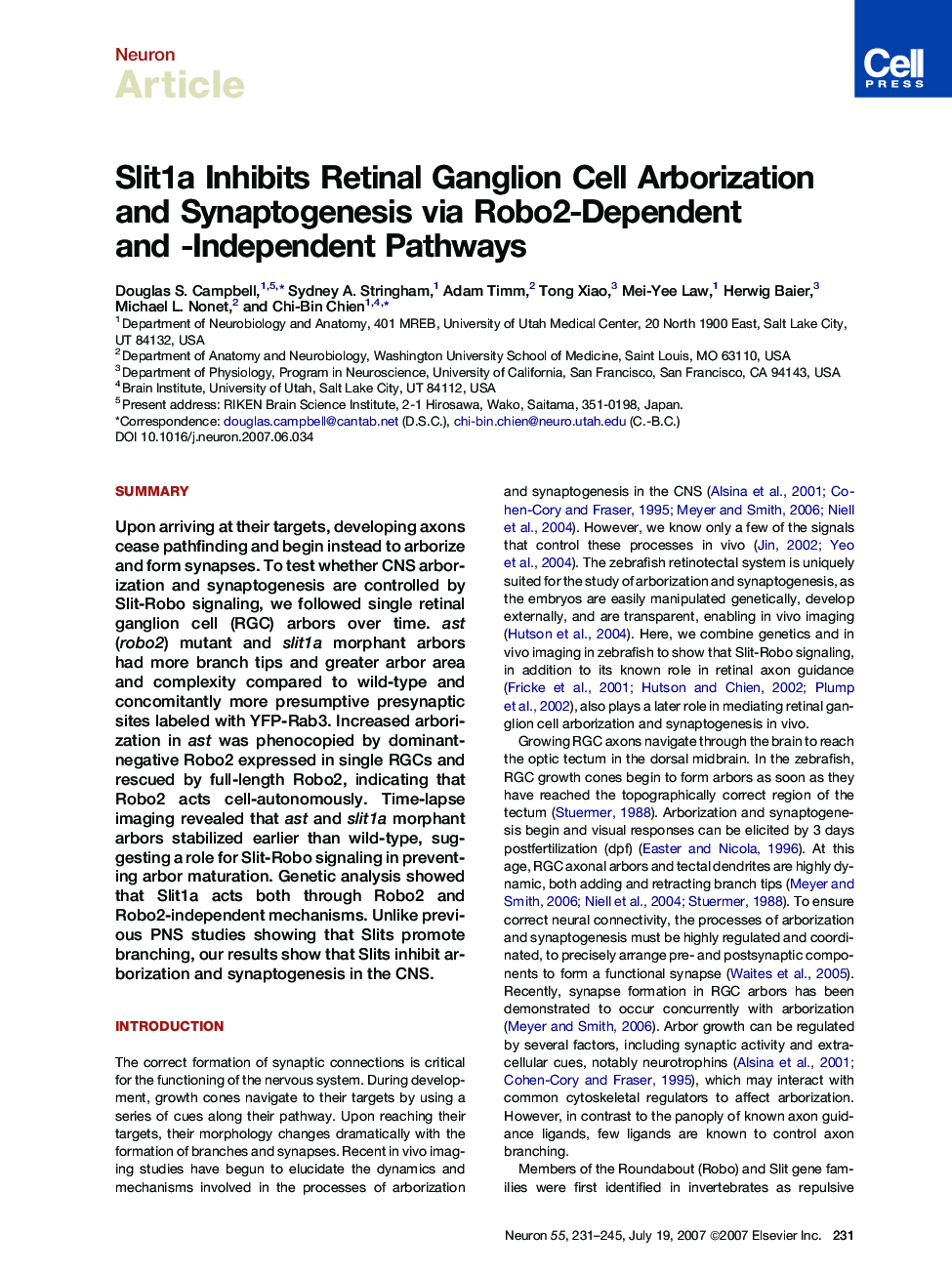| Article ID | Journal | Published Year | Pages | File Type |
|---|---|---|---|---|
| 4322595 | Neuron | 2007 | 15 Pages |
SummaryUpon arriving at their targets, developing axons cease pathfinding and begin instead to arborize and form synapses. To test whether CNS arborization and synaptogenesis are controlled by Slit-Robo signaling, we followed single retinal ganglion cell (RGC) arbors over time. ast (robo2) mutant and slit1a morphant arbors had more branch tips and greater arbor area and complexity compared to wild-type and concomitantly more presumptive presynaptic sites labeled with YFP-Rab3. Increased arborization in ast was phenocopied by dominant-negative Robo2 expressed in single RGCs and rescued by full-length Robo2, indicating that Robo2 acts cell-autonomously. Time-lapse imaging revealed that ast and slit1a morphant arbors stabilized earlier than wild-type, suggesting a role for Slit-Robo signaling in preventing arbor maturation. Genetic analysis showed that Slit1a acts both through Robo2 and Robo2-independent mechanisms. Unlike previous PNS studies showing that Slits promote branching, our results show that Slits inhibit arborization and synaptogenesis in the CNS.
